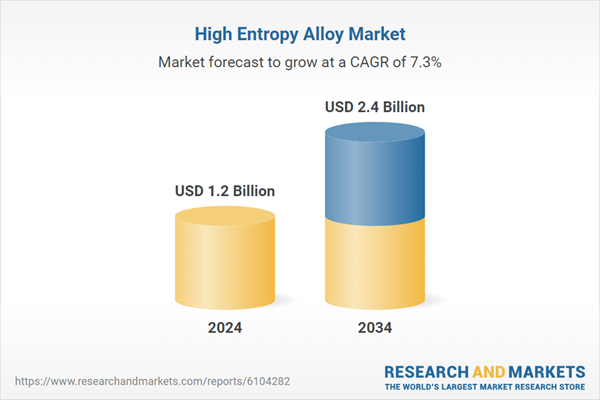The focus on developing lighter, stronger, and more temperature-tolerant materials is critical as industries prioritize energy efficiency and long-term performance. As a result, high entropy alloys are quickly becoming essential in next-generation component manufacturing, where advanced material properties are non-negotiable. These materials are showing strong potential in both traditional and emerging applications, ranging from mobility systems and heavy-duty infrastructure to components used in energy-intensive equipment. With growing investment in material innovation and the need to meet evolving performance benchmarks, the market is witnessing a steady shift toward widespread industrial deployment.
In 2024, 3D transition metal high entropy alloys accounted for 38.1% of the overall market share by alloy type. These alloys, typically made using elements such as Fe, Ni, Co, Cr, and Mn, are well-known for their mechanical resilience, corrosion resistance, and economic viability, making them ideal for applications across various industries. Their compatibility with powder metallurgy and additive manufacturing processes further broadens their usability.
These methods enable the production of complex parts and streamline prototyping, which is valuable in industries that demand quick development cycles and durable prototypes. Additionally, these alloys exhibit excellent radiation tolerance and high thermal conductivity, making them suitable for systems exposed to extreme temperatures and operating conditions.
By manufacturing method, casting and solidification processes led the market with a 43.1% share in 2024. This dominance is driven by the scalability and cost-efficiency of these techniques, especially when integrated into existing metallurgical systems. The process not only supports mass production but also plays a vital role in refining grain structure and stabilizing phases, which are essential for ensuring long-term material performance under high thermal and mechanical stress. Although powder metallurgy and additive manufacturing continue to gain traction, casting remains the most cost-effective approach for producing bulk components with intricate designs.
When categorized by property, alloys with superior mechanical characteristics held the largest market share in 2024. These properties - such as high tensile strength, impact resistance, and ductility - allow components to endure continuous mechanical loading without degradation. The unique atomic structure of high entropy alloys contributes to their solid-solution strengthening and resistance to deformation, which is why they are heavily used in applications that require structural integrity under cyclic stress and intense operational conditions. Their ability to maintain performance while reducing component weight helps manufacturers meet demanding regulatory and safety standards.
In terms of application, structural uses represented the largest share of the market in 2024. These alloys are frequently chosen for components that must bear significant load or operate in high-stress environments due to their fatigue resistance and mechanical stability. The materials’ multi-phase structures offer enhanced toughness, which helps prevent failure during high-impact use. As a result, these alloys are gaining ground in systems designed for durability, structural endurance, and long service life across multiple heavy-use applications.
Looking at end-use industries, aerospace and defense led the global market in 2024. This dominance reflects the sector’s ongoing demand for materials that combine lightweight characteristics with high mechanical strength and thermal resistance. Components that operate in rapidly changing thermal environments require enhanced oxidation and creep resistance, which these alloys can provide. Their proven reliability in harsh conditions continues to drive investment and innovation in the sector, particularly for mission-critical systems.
Regionally, the United States recorded a market value of USD 257.4 million in 2024, leading North America. The country's strong foundation in federally funded research programs and the growing demand across aerospace, defense, energy, and automotive industries has driven widespread adoption. These sectors rely heavily on materials that perform consistently under mechanical and thermal loads, making high entropy alloys a strategic asset in advanced manufacturing.
The competitive landscape of the global high entropy alloy market is moderately fragmented, with several players holding niche positions. Companies are focusing on proprietary alloy formulations, next-generation processing techniques, and adherence to strict industry quality standards to stay ahead. Innovation, customization, and material performance remain the core areas influencing competitive positioning across the sector.
Comprehensive Market Analysis and Forecast
- Industry trends, key growth drivers, challenges, future opportunities, and regulatory landscape
- Competitive landscape with Porter’s Five Forces and PESTEL analysis
- Market size, segmentation, and regional forecasts
- In-depth company profiles, business strategies, financial insights, and SWOT analysis
This product will be delivered within 2-4 business days.
Table of Contents
COMPANIES MENTIONED
The companies featured in this high entropy alloy market report include:- Alcoa Corporation
- AMETEK Specialty Metal Products
- Aperam S.A.
- ATI Metals
- Aubert & Duval
- Carpenter Technology Corporation
- Daido Steel
- Eramet Group
- H.C. Starck GmbH
- Haynes International
- High Entropy Alloys Inc.
- Hitachi Metals
- Hצganהs AB
- IHI Corporation
- Kennametal
- Materion Corporation
- Metalysis
- Nippon Yakin Kogyo
- Oerlikon Metco
- Plansee SE
- Praxair Surface Technologies
- Questek Innovations
- Sandvik AB
- Special Metals Corporation
- VDM Metals GmbH
Table Information
| Report Attribute | Details |
|---|---|
| No. of Pages | 220 |
| Published | June 2025 |
| Forecast Period | 2024 - 2034 |
| Estimated Market Value ( USD | $ 1.2 Billion |
| Forecasted Market Value ( USD | $ 2.4 Billion |
| Compound Annual Growth Rate | 7.3% |
| Regions Covered | Global |
| No. of Companies Mentioned | 26 |









